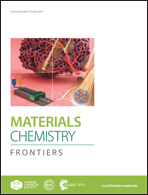Transpiration: from Chinese cabbage waste to supercapacitors with ultrahigh cycling stability†
Abstract
This research reported a new approach to enhance the self-activation of biomass carbon. Driven by the power of transpiration of fresh plants, erioglaucine disodium salt, which is widely used as a blue food coloring agent, was successfully transferred into the waste leaves of Chinese cabbage. More than 116% improvement of specific surface area was obtained after this carbonization process. The material was used as the electrode of a supercapacitor and showed impressive improvement of capacitance performance. In a three-electrode system, the device achieved a high capacitance retention of 99% after 10 000 cycles at a scan rate of 100 mV s−1.



 Please wait while we load your content...
Please wait while we load your content...